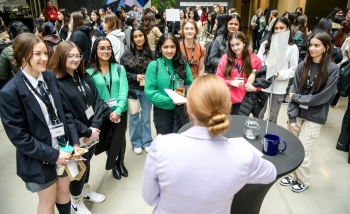Albert Einstein predicted a century ago the existence of gravitational waves – ripples in the fabric of spacetime moving at the speed of light. It was believed that these ripples were so faint that no experiment would ever be precise enough to detect them. But in September 2015, LIGO did exactly that. The teams working with the Laser Interferometer Gravitational-wave Observatory (LIGO) detectors in Louisiana and Washington measured a loud gravitational wave signal as it traveled through the Earth after a billion-year journey from the violent merger of two black holes.
Since that first detection, scientists have measured many more gravitational waves, including a signal produced by colliding neutron stars captured by LIGO and the Virgo detector in Europe in 2017. That cataclysm also generated electromagnetic waves – light – detected by numerous other telescopes, and helped scientists understand how gold is created in deep space.
In a special public lecture webcast at Perimeter Institute on October 23, 2019, Gabriela González will provide a first-hand account of LIGO’s century-in-the-making breakthrough, and explain observations made as recently as this year. González, a professor of physics and astronomy at Louisiana State University and former spokesperson of the LIGO collaboration, will take the audience on a journey to some of the universe’s most violent places, and explain how such distant events can lead to a very bright future here on Earth.
The Perimeter Institute Public Lecture Series is made possible in part by the support of donors like you.
Be part of the equation: https://insidetheperimeter.ca/donate
About PI
Perimeter Institute is the world’s largest research hub devoted to theoretical physics. The independent Institute was founded in 1999 to foster breakthroughs in the fundamental understanding of our universe, from the smallest particles to the entire cosmos. Research at Perimeter is motivated by the understanding that fundamental science advances human knowledge and catalyzes innovation, and that today’s theoretical physics is tomorrow’s technology. Located in the Region of Waterloo, the not-for-profit Institute is a unique public-private endeavour, including the Governments of Ontario and Canada, that enables cutting-edge research, trains the next generation of scientific pioneers, and shares the power of physics through award-winning educational outreach and public engagement.
You might be interested in



